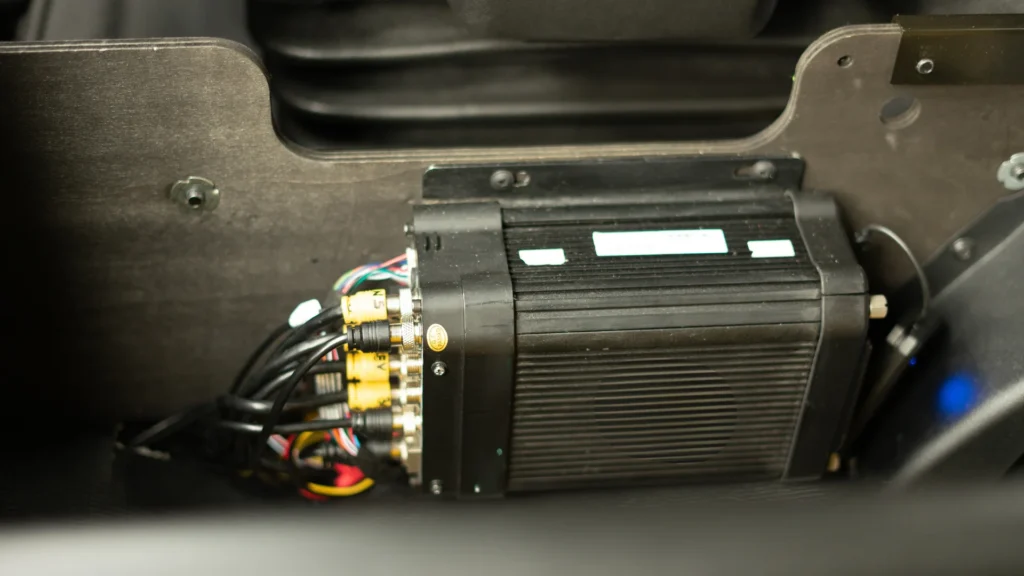DVS vs. DVR: Understanding the Difference

Like any business sector, the world of fleet management and telematics contains certain terminology and concepts that can be confusing, particularly if you’re new to the industry. Here at Nationwide Fleet Installations, we know how this kind of jargon can be overwhelming, which is why we have put together a series of articles to break down and explain some of the basics.
In this first installment, we’ll focus on two common abbreviations within the industry: DVS and DVR. While they might sound similar, they refer to completely different concepts within fleet management.
Direct Vision Standards
Direct Vision Standards (or DVS) refers to a set of safety regulations implemented by Transport for London (TfL) to address the safety risks associated with large vehicles in urban environments. It specifically targets heavy goods vehicles (HGVs) weighing over 12 tonnes, as they have been involved in a disproportionately high number of fatal collisions with pedestrians and cyclists.
The DVS regulations assess the level of direct vision a driver has from the cab of their vehicle, rated on a scale of 0 to 5 stars. If you wish to operate an HGV within the Greater London Low Emission Zone (LEZ) without incurring penalties, your vehicle needs to be issued a safety permit. These are currently issued to vehicles with a 1-star rating or higher under DVS regulations, though it is expected that the minimum star rating will rise in the future as DVS compliance becomes more stringent.
If your fleet vehicles don’t reach the current 1-star rating required for achieving a safety permit, you can fit them with the right kind of safety equipment to improve your rating. This includes additional mirrors, camera systems, and side-mounted sensors that improve the driver’s direct vision as well as their overall situational awareness. DVS compliance not only helps your fleet avoid fines and penalties but also contributes to safer roadways for all users.
Digital Video Recorders
What does dvr stand for?
DVR stands for Digital Video Recorder and, rather than being a set of guidelines for safer driving, refers to a specific technological solution designed to enhance the safety of your fleet. It does this by recording video footage from multiple cameras mounted on vehicles. DVRs can serve a variety of purposes, such as monitoring driver behaviour, tracking vehicle movements, and providing visual evidence in case of accidents or disputes with other road users.
DVR systems typically consist of multiple cameras installed around the vehicle that capture footage from different angles to provide a comprehensive view of the vehicle’s surroundings. This data is stored on the DVR device and can be accessed remotely for review, analysis, and reporting. By using a DVR system, fleet operators can identify and address risky driving behaviours, reduce the likelihood of accidents, and protect their fleet from false claims.

A popular use of DVR devices is to integrate them with the vehicle’s telematics system. This allows the fleet operator to gather valuable insights on vehicle performance, fuel consumption, and maintenance needs. This information can help improve overall fleet efficiency, reduce costs, and streamline operations.
In Conclusion
While DVS and DVR are two distinct concepts in the fleet management and telematics industries, both play a crucial role in ensuring the safety and efficiency of your fleet. Understanding the differences between the two and implementing the appropriate solution is key to maintaining a compliant and competitive fleet.
Get in touch
At Nationwide Fleet Installations, we provide fleet operators and equipment providers alike with a nationwide installation service for telematics equipment, vehicle safety systems, and more. Whether you’re looking to roll out DVS-compliant safety features or install DVR systems across your fleet, our team of experts is here to help.
Call us on 0161 786 6600 or email the team at info@nationwidefleetinstallations.com to see what we can do for you.






